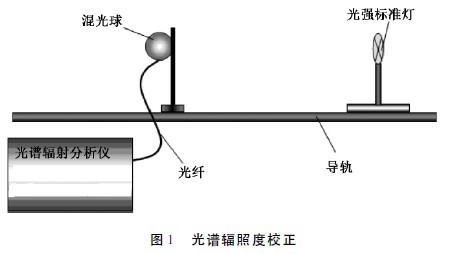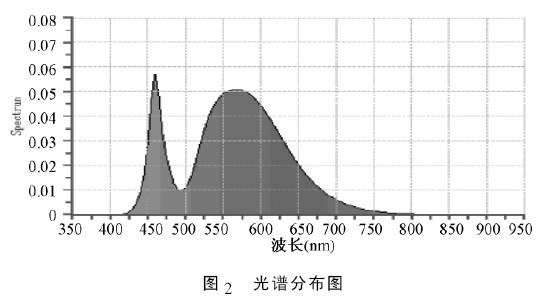Photobiosafety Testing and Analysis of High Power LED Street Lights
introduction
With the continuous advancement of LED technology, the efficacy of LEDs continues to increase, and the brightness continues to increase. The era when LEDs emit light without harm to the human body is gone forever. Europe, North America and other developed countries and regions have begun to pay close attention to LEDs. The photobiosafety of the product and the development of a set of standards. However, at present, domestic research on LED light biosafety testing technology is still very weak, and related research systems and method research papers are few and far between.
This article examines the photobiosafety of a high-power LED streetlight that is currently used in LED lighting. Firstly, the illuminance, radiance and table source were tested. Finally, the hazard types of the test results were analyzed and classified. LED light sources based on general illumination do not produce infrared partial spectra above 800 nm. This experiment is only tested for partial spectral ranges from 200 nm to 800 nm.
The basic parameters of the luminaire are as follows: voltage 220 V, current 0. 3248 A, power 65. 98 W, power factor 0. 9231, frequency 50 Hz; luminous flux of the lamp is 5747. 3 lm, central light intensity 1727. 33 cd , maximum light intensity 2839. 16 cd, maximum light intensity angle c: 180. 0° γ: 59. 0°, light efficiency 87. 11 lm /W, correlated color temperature 4632 K, color rendering index Ra = 69. 1, color Product coordinates x = 0. 3617y = 0. 3949 u = 0. 2062 v = 0. 3378.
2 irradiance test
Generally speaking, the light distribution design of LED street lamps is designed according to the needs of road lighting. Therefore, the brightness value of the field of view obtained by the central axis position of the street lamp is often not the maximum value. The maximum light intensity direction of the sample is: c: 180. 0° γ: 59. 0°. Considering that the test needs to be directed to the maximum hazard direction of the street lamp, a special fixture is required for the measurement, and the maximum light intensity direction of the fixed lamp is perpendicular to the direction of the detector end face.
In this experiment, the spectral range of the spectral radiation analyzer is 200 nm to 930 nm. Before the irradiance test, the calibration of the spectrum analyzer should be performed first. The experimental setup is shown in Figure 1.

Due to the large span of the test spectrum, the calibration of the spectrum analyzer requires two different intensity standard lamps in the sub-band. Among them, a standard xenon lamp with a constant current of 300 mA is used for spectral calibration of 200 nm to 350 nm; a spectral signal of 350 nm to 800 nm is calibrated, and a standard tungsten halogen lamp is used as a light intensity standard lamp.
The test system adopts the method of mixing the aperture of the light ball as the input port of the detector, and the small mixed light ball can fully receive the photometric signal in front of the detector. Since the illuminance signal is strong in the measurement of the photobiosafety system, the light mixing sphere is It can also make a good cosine correction to the directionality of the tested luminaire when the luminosity signal is fully received.
In addition, the random reflection of the internal material of the light mixing sphere causes the incident light to be polarized. After multiple reflections, the incident light with the same spectral characteristics can be filled with the incident aperture of the radiation, thereby avoiding the difference in polarization characteristics of the incident light at different angles.
After the calibration is completed, the light intensity standard lamp is removed, and the LED street lamp to be tested is installed, and the illuminance of the sample is measured. In general, the maximum illumination for general illumination is 500 lx, so this illumination is used to measure when evaluating general illumination lamps. In addition, the calculation of the hazard value of the light source is to weight the hazard function after the spectral scan, and the variation of the hazard weighting function of the blue light is very large, so the measurement wavelength interval is set to 1 nm in the system to ensure the accuracy of the test result.
Measure the maximum light intensity angle of the luminaire (C: 180. 0° / G: 59. 0°) The illuminance value produced by the end face of the light mixing ball. Adjust the distance of the luminaire so that the end face produces an illumination of 500 lx and fix the distance for spectral testing. It is necessary to pay special attention to the physiological avoidance distance of the human eye is 200mm. In view of the principle of the worst expected use condition in the use of the luminaire, it is necessary to ensure that the test distance is greater than 200 mm.
Obtain the relative spectral power value of the luminaire under 500 lx illuminance, and measure the illuminance spectrum distribution as shown in Figure 2:

The data is collected by software, and the spectral irradiance test results of the luminaire in each band are automatically obtained:
